Research Paper
Advantages of using HNBR in Rubber Parts for Air Brake System of Locomotives
The Metaplastomer: Hydrogenated Nitrile Rubber (HNBR)
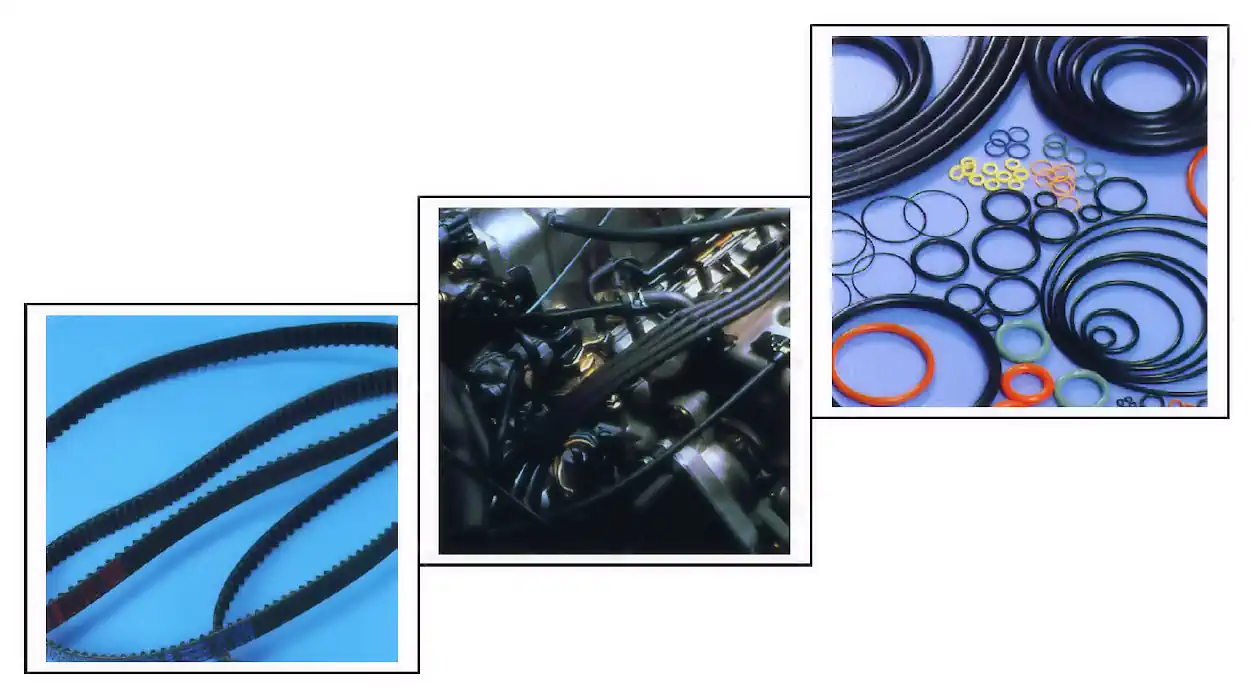
An ideal function material should be as strong as metal, as light & chemically resistant as plastic, and elastic as rubber, and as such, may be
termed as metaplastomer. The automotive and energy industries, among others, have long waited for the development of such a metaplastomer
featuring high reliability and durability under the most severe conditions.
Nippon Zeon is the first in world to develop a material having properties approaching those of a metaplastomer. The material is HNBR. This HNBR
was developed based on Nippon Zeon's experience in the synthetic rubber business over a quarter of a century. An elastomer composed of a
saturated chain, HNBR is produced by a special hydrogenation process from NBR, which itself has been used widely as an oil resistant elastomer.
In addition to the excellent oil resistance and workability displayed by NBR, the HNBR has surpassing heat, chemical and ozone resistance.
Compared with the conventional oil and heat resistant elastomers, it has much greater strength and wear resistance.
The use of HNBR improves the reliability and durability of various rubber parts.
HNBR: Structure and Functions of each Unit

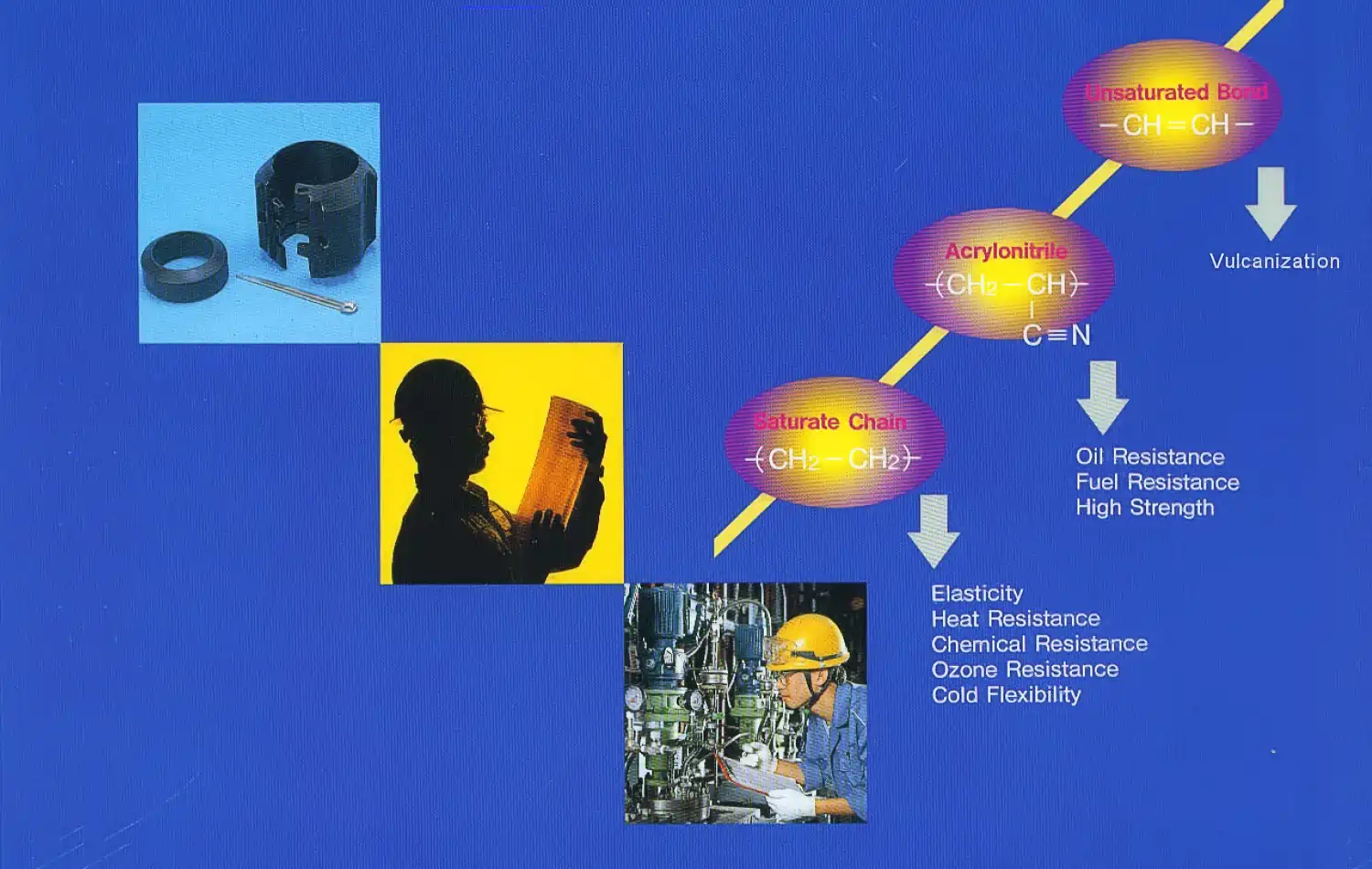
Balance of Required Properties for Fuel Parts
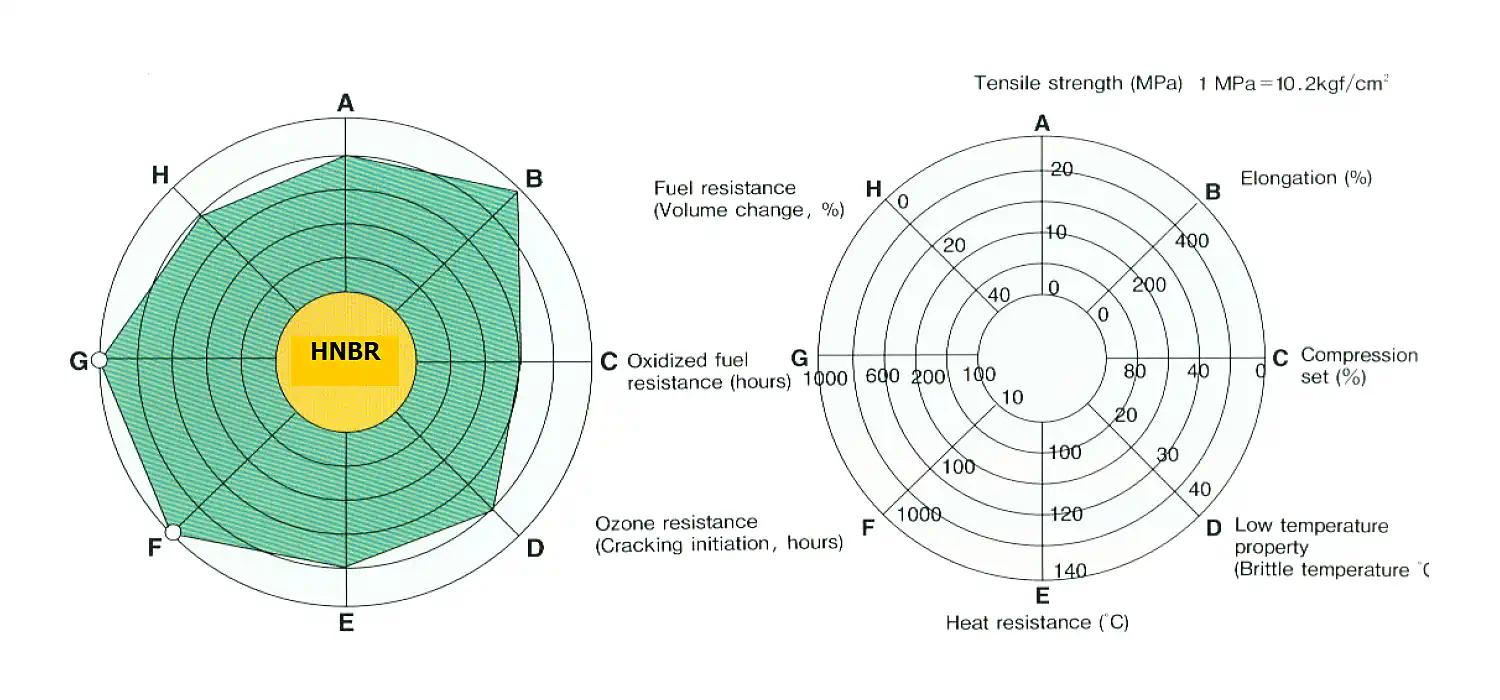
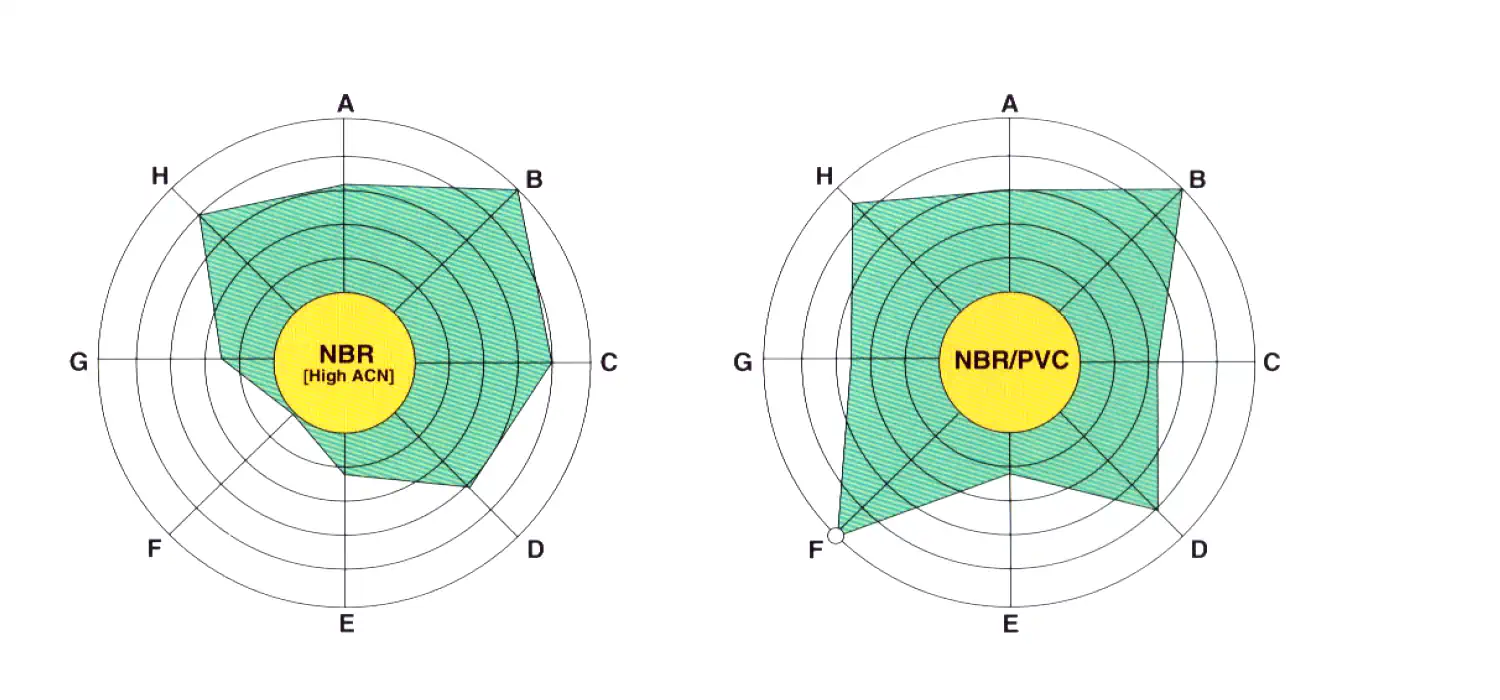
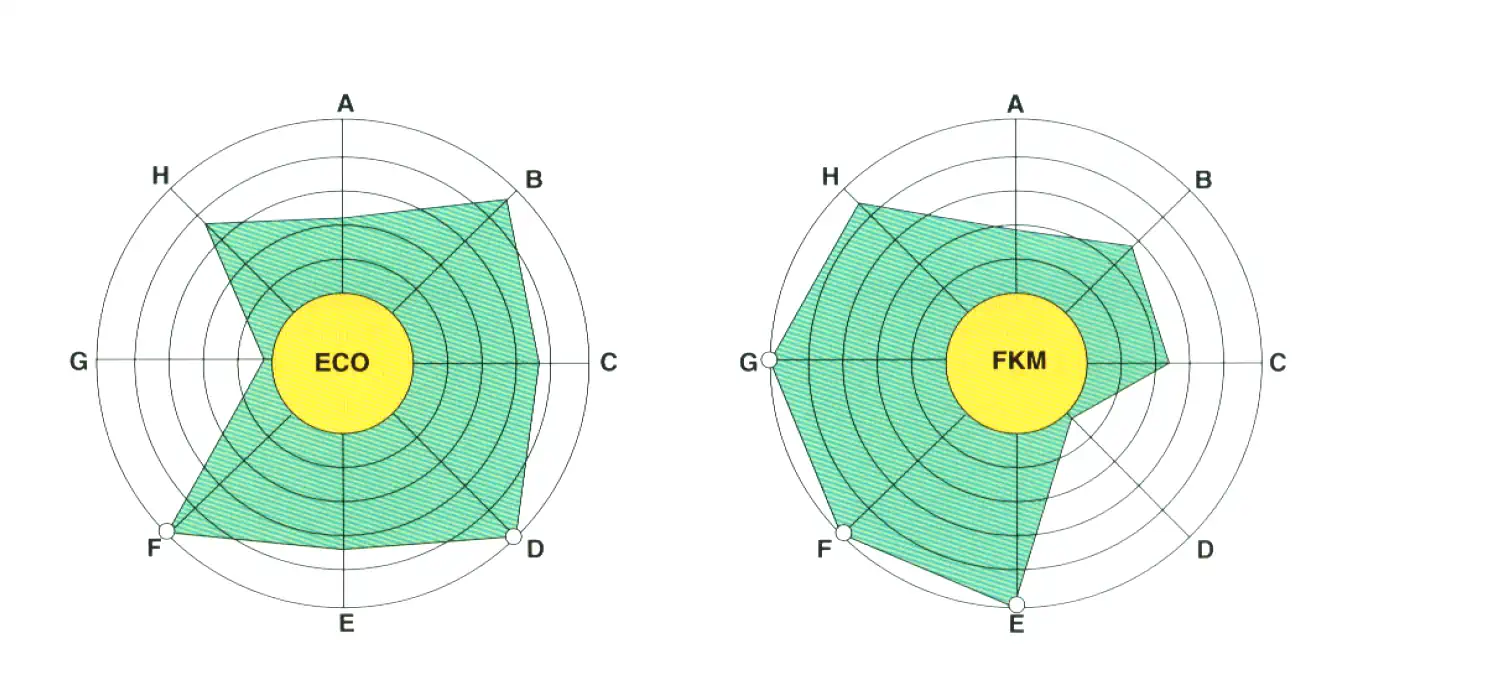
Comparative Test carried out at our R&D Unit
Three different formulations of HNBR compound were prepared of Shore Hardness 70°, 80° and 85° Shore A. These were tested against conventional NBR (Nitrile) based compounds presently used in Air Brake Kits. The results are tabulated as under:
Tensile Strength and Elongation at Break
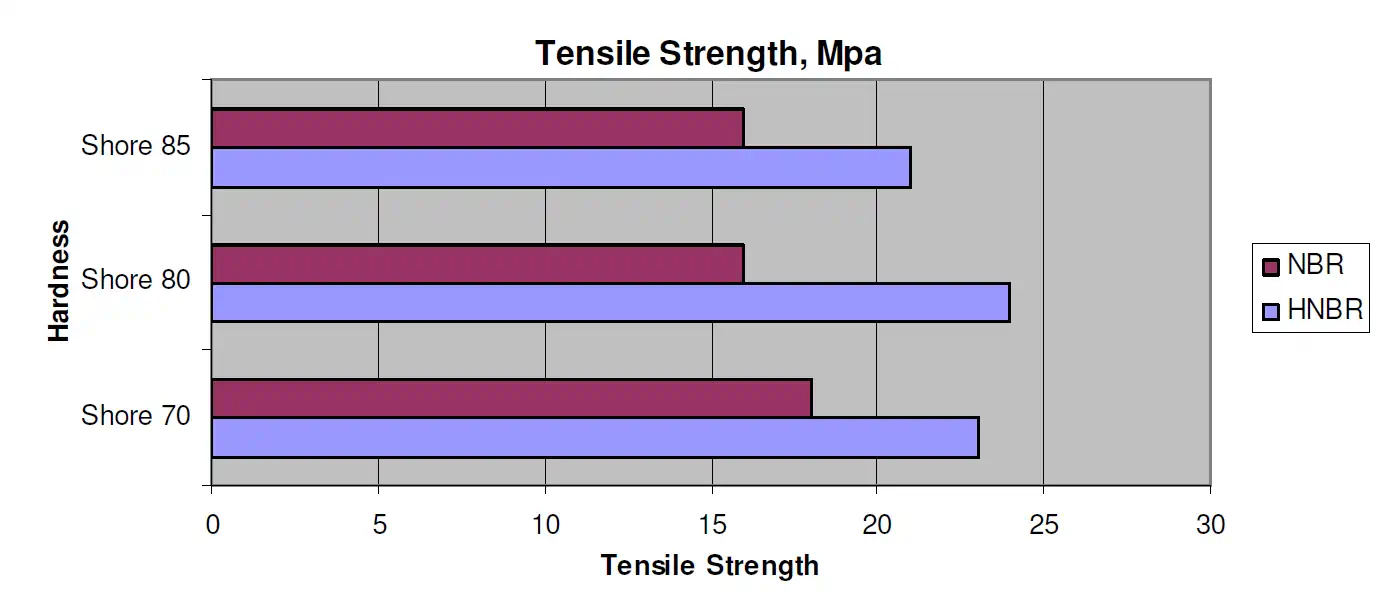
Elongation at Break
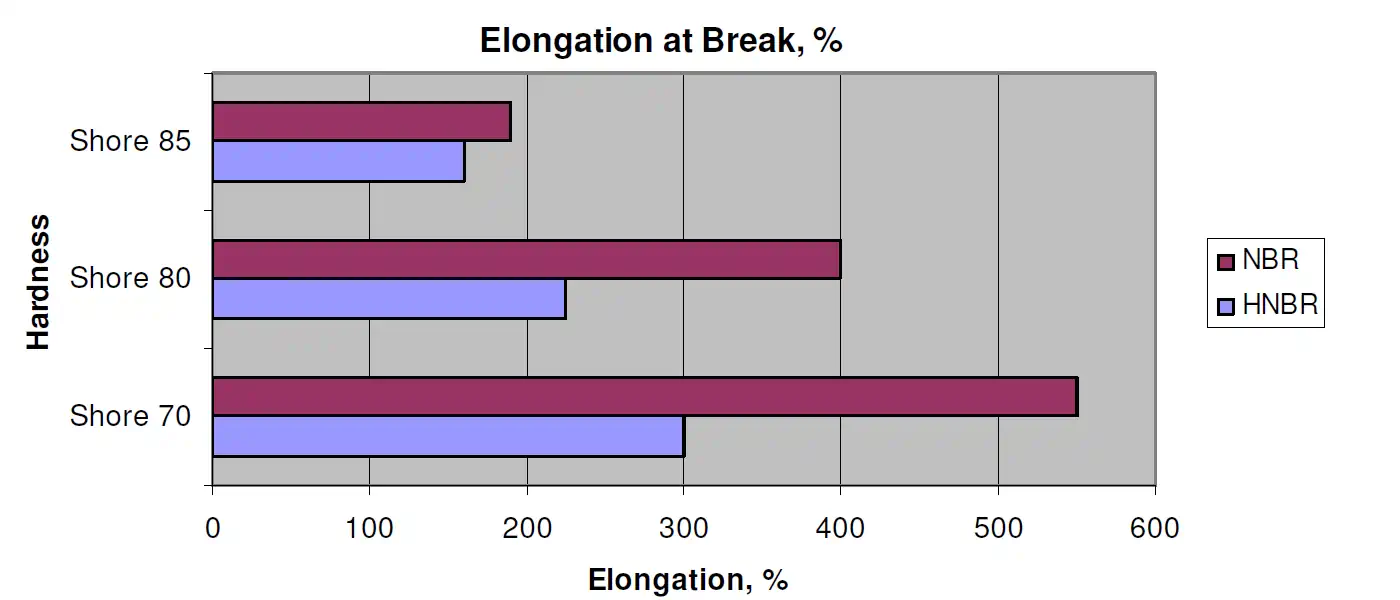
The Tensile Strength is much higher than can be achieved for Nitrile based parts. In average the Tensile Strength is over 20 Mpa for HNBR based parts. Nitrile rubber-based parts have a TS around 16 Mpa average. However, The Elongation at Break is little lower than NBR but since the parts have static application on compressive mode (Gaskets, O-Rings, Seals) this lower elongation property does not affect the performance.
Compression Set
This is an extremely important property for Seals, O Rings, Gasket type materials. Since in Air Brake System, all the rubber parts are assembled under compression, compression set is perhaps the most reliability factor for performance measure. HNBR based parts showed brilliant results under worse circumstances. To estimate long term reliability factor, compression set tests were carried out at 100 C and 150 C. NBR based samples degraded extremely fast resulting in Compression Set of more than 80%. HNBR based samples even at 150 C were very stable and complied the requirement of specification IRS R 48/88.
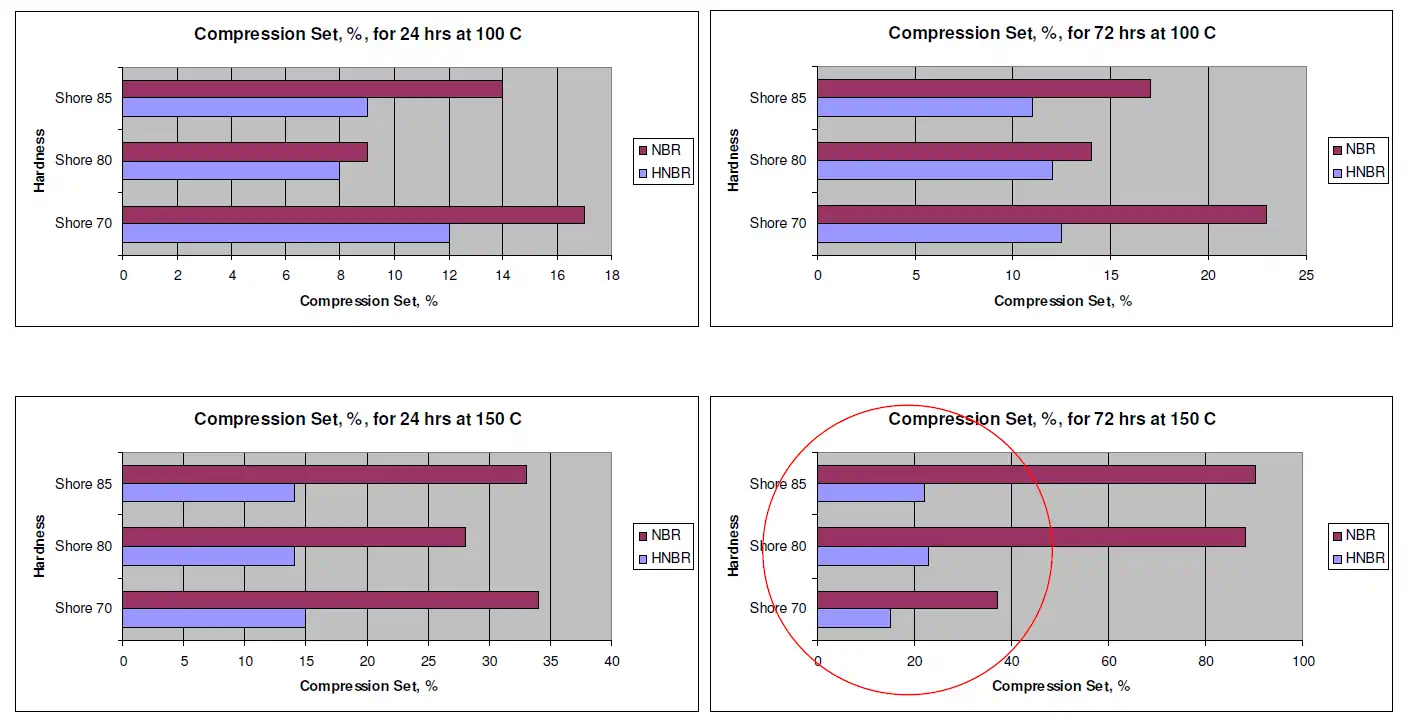
Accelerated Heat Ageing in Air Tests
Long term reliability is measured by accelerated air ageing tests. Values like Shore Hardness, Tensile Strength & Elongation at Break are compared before and after the test to study the changes/degradation of the system. Heat Ageing Tests were carried out at 100°C for 72 hrs and at 150°C for 72 Hrs for both HNBR and NBR based parts of Shore Hardness 70°A, 80°A & 85°A. The changes for HNBR based parts are insignificant compared to NBR based parts. NBR 85°A samples degraded completely and were unusable.
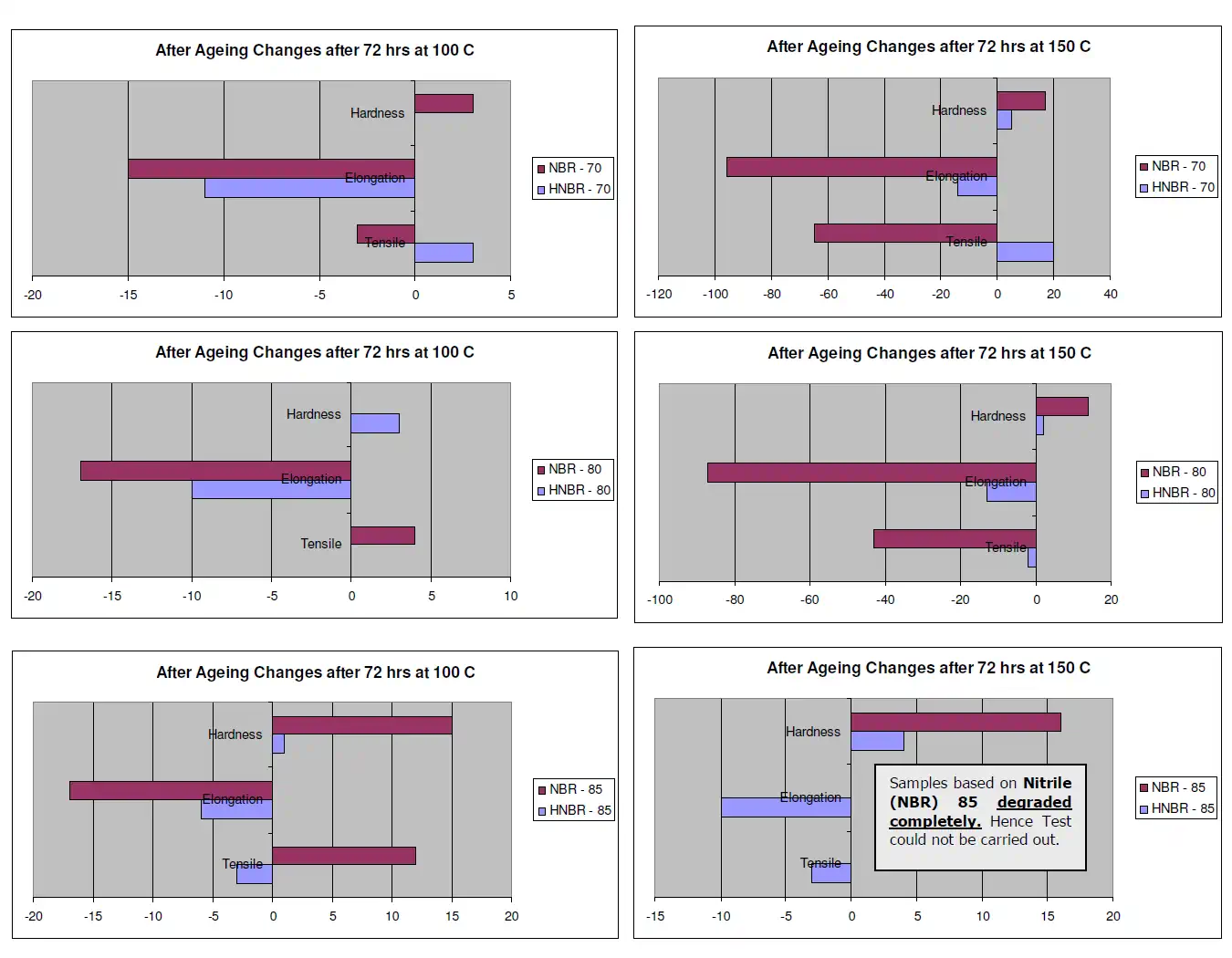
Oil Resistance
Oil resistance for HNBR is comparable to NBR based parts. There is no extreme or significant improvement, but the results are at par to the requirement of the specification IRS R 48/88.

It is not recommended to consider the above results as a final test report. The above stated results obtained are based on laboratory testing only. The above results may change subject to fine tuning of machines, curatives and doses.
Conclusion
HNBR based products exceeded the benchmark set by other polymeric materials tested here with respect to necessary, yet critical parameters of the end product used in contact with fuel parts.
Publishing Footnote
After meticulously conducting research and analyzing the data gathered, the final conclusion of our study underscores the importance of publishing
our research article to the public domain. Our findings have significant implications for both academia and society at large, shedding light on
previously unexplored facets of the subject matter. By making our research freely accessible to all, we aim to foster transparency, facilitate
further inquiry, and contribute to the advancement of knowledge in our field. Moreover, sharing our findings with the public enables broader
engagement and dissemination of valuable insights, potentially influencing policy decisions and practical applications. Thus, we are committed
to publishing our research article to the public domain, ensuring its accessibility and impact for the betterment of our collective understanding
and progress.
Published By : Research and Development Wing of M.G.M. Rubber Company, Kolkata, India
Published On : March 2009